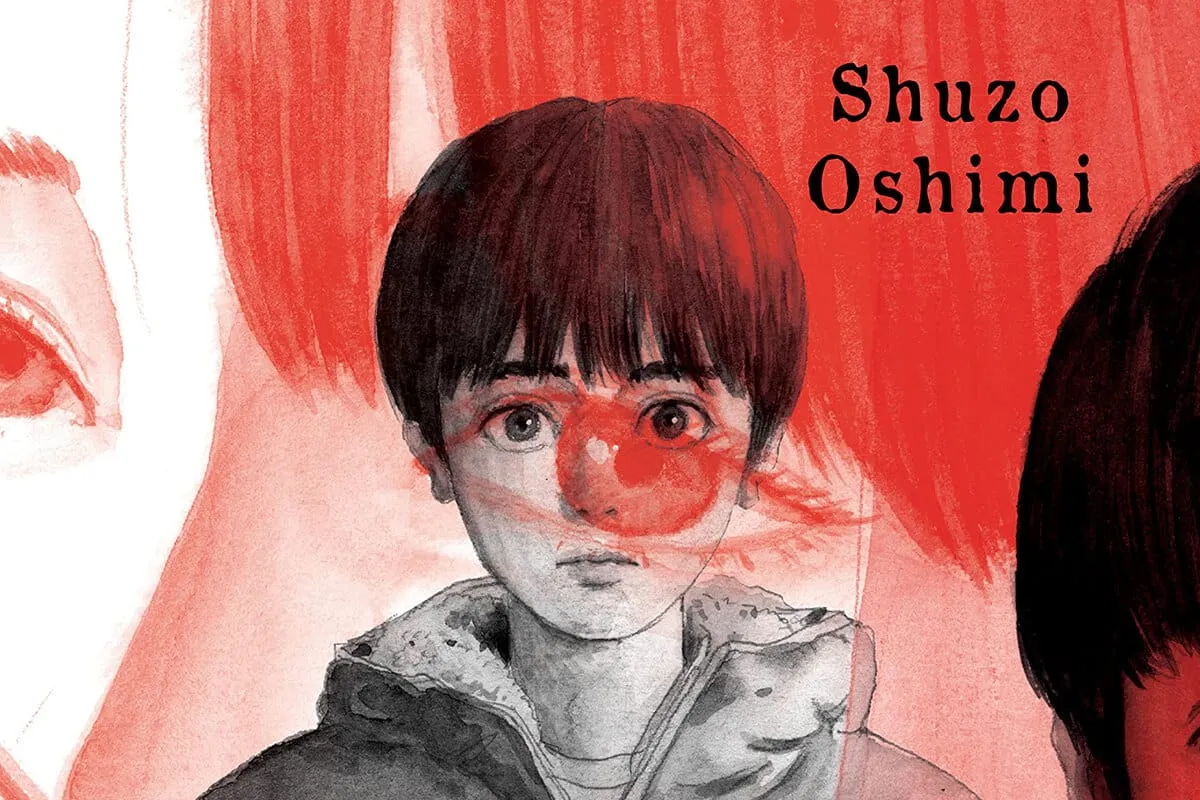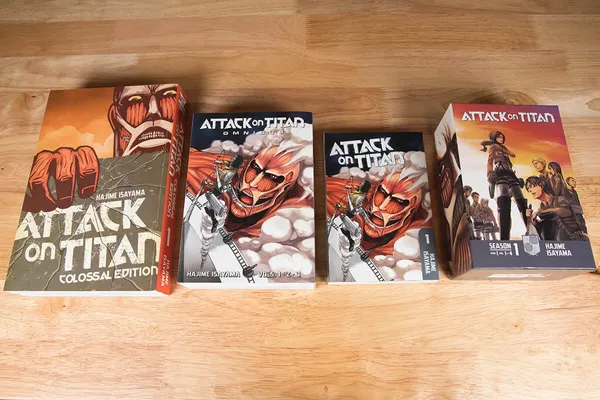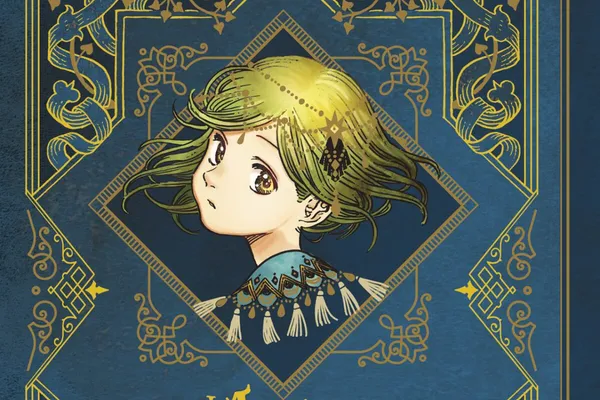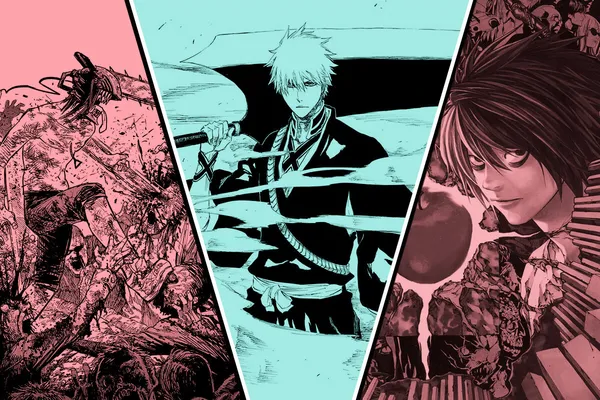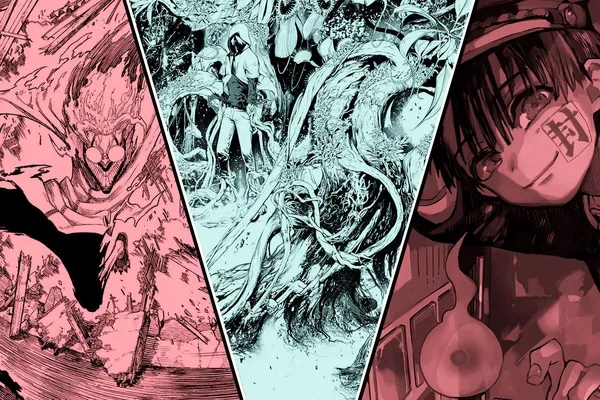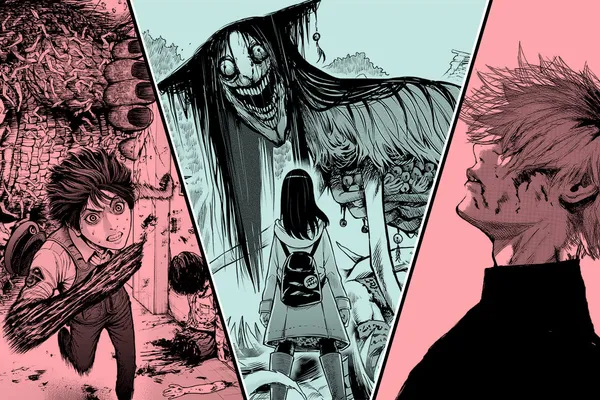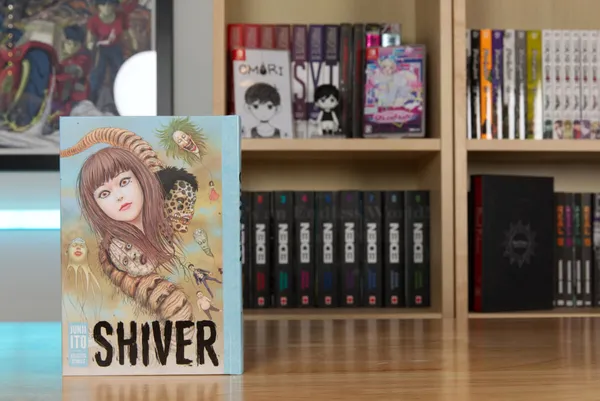Blood on the Tracks by Shuzo Oshimi is one of those psychological manga you can tear through in a weekend, but it doesn’t let go after that. It’s light on text at first, almost deceptively simple, but tightens with each volume until you’re holding your breath without realizing it. It only took me two days to finish, but the weight of it stayed with me long after I set it down.
Blood on the Tracks is uncomfortable, personal, and painfully human. It reads less like fiction and more like something you shouldn’t be seeing, like reading someone’s diary after they left it open on the table. You get the sense that this Shuzo Oshimi manga wasn’t written because he wanted to, but because he had to.
Spoiler Warning
The following sections discuss major themes and elements from the end of the series. If you haven’t finished reading yet, come back to this after you do.
The Mother That Won’t Let Go
Blood on the Tracks isn’t just a story about a boy named Seiichi. It’s about his mother, Seiko, and how her love turns into control. Seiko never seemed to want to be a mother in the first place. But once she had a child, she refused to let him grow up. She kept him small, emotionally stunted. He wasn’t nurtured. He was preserved, like a doll.
Even as a teenager, she baby-talks him and treats him like a toddler. And Seiichi clings to her—not because he chooses to, but because he doesn’t know how to exist without her. That’s the only kind of love he’s ever known: conditional, suffocating, and obsessive.
The worst part is that others around them sense it. The extended family notices. The father sees it. But no one intervenes. His dad is passive. Gentle, maybe, but unwilling to disrupt the fragile balance Seiko has built.
You keep expecting Seiichi to break free, to stand up for himself, to finally wake up. But this story doesn’t give you a neat character arc.
He pulls away, then falls back in. He questions her, then apologizes. The cycle keeps repeating. Progress here is messy, confusing and often heartbreaking.
What happens when the only love you’ve ever known is also the thing destroying you? That’s where the real horror lies. It isn’t in monsters or ghosts. It’s in the everyday. The quiet pressure to stay small, to not upset the person who claims to love you most. That weight builds slowly, and it’s hard to notice until it’s too late.
The Messiness of Life
This story doesn’t follow a clean arc. It’s not about pushing through limitations or becoming stronger. It’s about the actual struggle: the falls, the regression, the days where it feels easier to go back than forward.
Most manga want to show you characters who grow and overcome. Blood on the Tracks shows a character who just wants to figure out how to be a person again. And it doesn’t romanticize the process. There are moments where you think Seiichi found clarity only to watch him fall apart again. That cycle is the point. People aren’t infallible. They want to be better, but sometimes that emotional release, that anger, that drive to do better… it gets drowned out by trauma.
Some of the Most Powerful Panels in Manga
Oshimi doesn’t over-explain. He lets you sit in silence. The school assignments. The family photos. The old drawings from childhood. They reveal more about Seiichi’s life than any dialogue could.
Oshimi’s artwork doesn’t just show trauma, it makes you feel it. The way the mother towers over him in some panels, her face just slightly off. The way time seems to slow in scenes of emotional tension. The ugliness inside his mother seeps into her face. It spills into the world around her. The disorienting pacing. It’s all intentional.
Even the painterly color pages feel like memories you’re not supposed to touch—soft and beautiful, but painful.
There’s also this amazing use of surreal imagery. A butterfly flying into someone’s mouth. A figure standing too still in the dark. Faces too calm, or too close. None of it is literal but it hits for that reason. It gets at emotions that words couldn’t carry on their own. He doesn’t always tell you what the characters are feeling or thinking, but shows you instead.
Quiet Catharsis
What I found most striking was how the story ends; not with a dramatic explosion, but with distance. There’s a release that happens late in the story. Maybe too late for some readers. But it feels right for the character. The noose tightens but then it lets go. Not all at once. Not cleanly. But eventually it does.
And what’s left for Seiichi isn’t revenge or resolution, it’s a quiet decision to stop the cycle. To live a life not built on pain, but away from it. A solitary life, yes, but a peaceful one. Just him, his books, and no one else to pull into his trauma.
Oshimi at His Most Vulnerable
Shuzo Oshimi always writes personal stories, but this one feels like something he had to let out. You can tell.
There’s even a photo at the end, what looks like him and his mother with the faces cut out. And a note. He says he had to write this to survive. He apologizes to anyone who might see themselves in the story.
It’s raw in a way most manga never are.
And Then the Power Shifts
In the final volumes, everything reverses.
Seiko becomes fragile, confused, and dependent. Seiichi becomes the one in control. But instead of lashing out, he responds with calm detachment. He gives her care, but on his terms, not hers.
That’s what breaks her. Not cruelty, but indifference. She loses the one thing she clung to most: control.
Final Thoughts
Blood on the Tracks won’t be for everyone. It’s slow, it’s quiet, and it’s hard to sit with because it doesn’t offer the kind of story where the main character becomes a hero or escapes cleanly. What it shows instead is the full emotional weight of being under someone’s control, especially when that person is supposed to love you.
Sei’s mother isn’t just manipulative. She takes over his life completely. She keeps him small, dependent, afraid to grow up. And the scariest part is, he lets it happen because it’s all he knows. Watching him slowly break away from that, not in a triumphant moment but through pain, distance, and eventually care, is what makes the story hit so hard.
The ending doesn’t feel like justice. It feels like clarity. He doesn’t pass on the trauma. He doesn’t try to fix her. He doesn’t even pretend to forgive. He just steps away—quietly. And that choice, to end the cycle and not pull anyone else into his pain, is what makes this story so rare.
This Blood on the Tracks manga review is just one way to process what this story does to you. It’s one of the most emotionally devastating seinen manga I’ve ever read, and easily among the most haunting psychological manga out there. It’s not traditional horror, but it’s in my best horror manga list for a reason. The quiet kind of horror, the kind that sticks with you and the kind that feels real, is sometimes the scariest of all.
This is one that’s going to stick with me for a long time.
